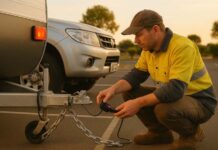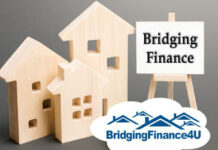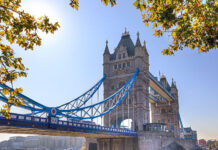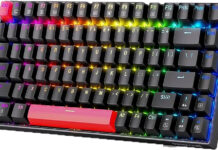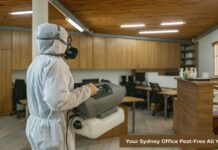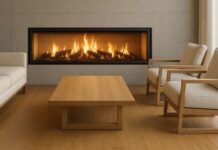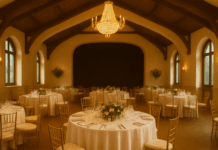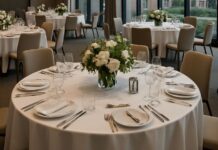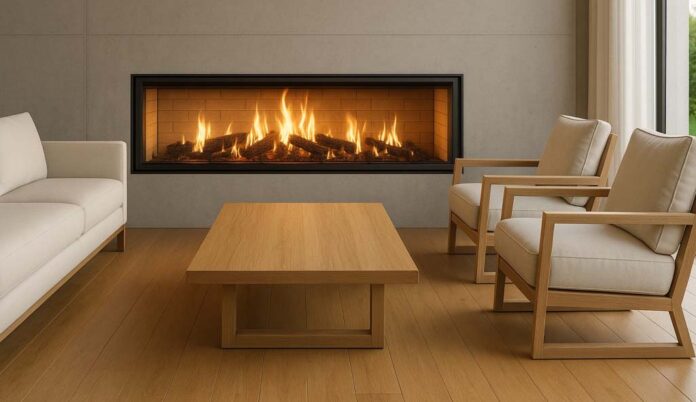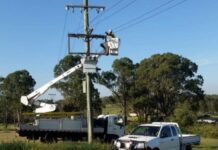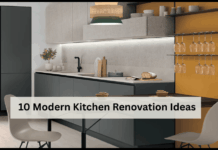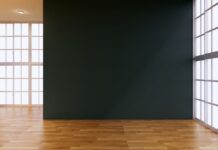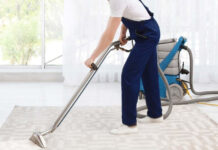Why This Question Matters
Australians love the crackle, glow and warmth of a real fire. It feels homely on a cold night and it can be a beautiful focal point in the living room. At the same time, air quality and climate impact are real concerns, especially in denser suburbs and on still winter evenings when smoke can hang low and linger near homes and streets.
This article looks specifically at built-in wood fireplaces. These are sealed fireboxes set into a wall or cavity with engineered airflow and a proper flue system. They are very different to open fireplaces, which let most of the heat and smoke escape up the chimney. Our focus is on how modern in-built designs perform in real Australian homes.
What follows is a clear, balanced look at the environmental pros and cons. We will explain how design, installation and day-to-day use can change outcomes, and where alternatives like a free-standing electric fireplace might fit for people who want flame effect without on-site smoke. By the end, you will know when an inbuilt wood fireplace can be a responsible choice and when a different option makes more sense.
What Makes an “Inbuilt” Wood Fireplace Different?
An inbuilt wood fireplace features a sealed firebox with engineered airflow, supporting secondary and tertiary combustion. This burns the gases and fine particles that escape in an open fire, resulting in more usable heat with less smoke. Heat capture is better too. Firebrick linings hold temperature, internal baffles shape the flame path, and convection pathways push warm air back into the room. Correct installation is part of the system. A matched fireplace flue kit sets the right draw and helps keep operation safer and cleaner. The bottom line is simple. Used properly, an inbuilt unit can outperform an open hearth.
The Environmental Upsides (When Things Are Done Right)
Efficient heat from a local, renewable fuel
Burning well-seasoned, responsibly sourced timber can deliver intense heat with a smaller carbon footprint at the point of use. Dry wood burns hotter, releases more of its energy, and leaves less unburnt smoke in the flue.
Lower Emissions Than Open Fires
Modern in-built units are designed for cleaner combustion. Tested, compliant models aim to meet Australian efficiency and particulate standards. With a hot fire and the air controls set correctly, visible smoke should drop once the fire is established.
Resilience and Energy Independence
A wood heater does not rely on the grid. During blackouts, you still have heat for the main living area. For rural households with sustainable wood on hand, this can mean fewer hours spent on generators and a lower overall reliance on electricity or gas.
Room-by-Room Heating
Targeted heating lets you warm the space you use most and leave central heating off or set it lower. That can trim household energy use over winter, especially in smaller, well-insulated homes.
The Environmental Downsides (And Where They Show Up)
Fine particle pollution and smoke
Poor combustion sends PM2.5, black carbon and smoke into the air. Wet wood, throttled air controls and long smoulder burns make it worse. These particles harm lungs and can aggravate asthma, so health authorities urge careful use or different heating in sensitive areas.
Real-world variability
Lab tests look tidy. Homes are not labs. Cold starts, the wrong fuel, blocked flues and bad habits can wipe out the gains of a compliant unit.
Urban air-sheds
In valleys or on still winter nights, smoke can hang close to the ground. Even if each heater meets the rules, many chimneys on one street can add up to noticeable haze.
Warming impact from poor operation
Older models or stoves run badly can produce methane and black carbon. Both are short-lived climate pollutants that add to warming even when wood is a renewable fuel source. Good equipment, dry wood and hot, clean burns are essential to keep impacts down.
Standards, Compliance and What to Look for (Australia)
In Australia, two key tests apply to wood heaters. AS/NZS 4012 measures efficiency and AS/NZS 4013 measures emissions. New inbuilt models should achieve at least 60% efficiency and have particulate emissions of 1.5 g/kg or less. Ask the retailer or installer for the compliance certificate and check the exact figures on the data plate or spec sheet.
These standards matter because certified units are engineered for cleaner, hotter burns when used correctly. Pair the fireplace with the right fireplace flue kit, ensure the flue height and clearances meet the regulations, and keep the run as straight as possible. Once the fire is established, visible smoke should fall away. Choose a model that suits the room size, insist on professional installation, and maintain door seals, baffles and bricks. Staying close to the tested setup helps the heater perform as intended by the standards.
Installation and the Role of a Fireplace Flue Kit
Get the flue right
Correct flue height, straight runs and proper clearances help the fire breathe. Good draw reduces back-puffing, keeps the flame bright and supports more complete combustion. That means less smoke and more useful heat in the room.
Use a quality fireplace flue kit
Well-made components matter over time. A solid casing, tight seals, correct flashings and a suitable cowl or cap keep the system airtight and stable through heat cycles and bad weather. Proper roof flashing stops leaks and protects the ceiling cavity. A matched fireplace flue kit also helps the unit perform closer to its tested figures.
Choose professional installation and follow local rules
Have a licensed installer fit the fireplace and flue to meet Australian standards and council requirements. This protects safety and performance and keeps your warranty intact. In newer, tighter homes, consider room-sealed or outside-air options offered with some kits. Bringing combustion air from outdoors can improve efficiency, reduce drafts and help the heater run clean.
How User Behaviour Swings the Outcome
Burn seasoned wood only
Use dry hardwood at roughly 20% moisture. Green or wet wood smokes more, makes creosote and gives less heat. Store split logs for 6 to 12 months, off the ground, under cover, with airflow on all sides. A cheap moisture meter helps you pick the right pieces before each burn.
Start hot and keep it bright
Build a strong fire with kindling and small splits, then add larger logs once the flames are established. Set the air controls so the fire runs clean. Avoid long, smouldering overnight burns. They create more pollution and gunk up the flue.
Maintain the system
Sweep the flue at least once a year. Replace door seals when they flatten or crack. Keep baffles clear and seated correctly. Clean the glass only when cold and use ash or a proper cleaner to avoid scratching.
Match the heater to the room
Pick a unit with output suited to the space. Oversized boxes are throttled to keep rooms comfortable, which leads to dirtier burns and wasted fuel.
Comparing Options: Inbuilt Wood Vs Free-Standing Electric Fireplace
Inbuilt wood fireplace
Pros: Strong radiant warmth, works during blackouts, renewable fuel when sourced well, classic ambience.
Cons: On-site smoke if misused, wood storage and handling, regular cleaning and ash removal.
Free-standing electric fireplace
Pros: No on-site combustion, zero local emissions, simple install, ideal for units or smoke-sensitive areas, can run on green power, all input electricity becomes heat.
Cons: Overall footprint depends on the grid mix, usually a supplementary heater for ambience or small rooms.
Quick note
Ultra-low emission wood heaters are improving overseas, including some New Zealand models, but options in Australia remain limited. If you want a flame effect without smoke, a free-standing electric fireplace is the easiest path. If you choose wood, select a certified inbuilt unit and operate it well.
When an Inbuilt Wood Fireplace Can Be the Greener Choice
- You live rurally or semi-rurally and can source seasoned wood from responsible suppliers.
- The home is well insulated and the unit is sized to the room, so you run hot, clean burns.
- The fireplace is certified to Australian standards and fitted by a professional with a quality fireplace flue kit.
- You stick to good habits: dry fuel, strong starts, regular servicing and no smoulder.
When It May Not Be the Best Choice
- You live in a dense urban area with winter inversions or regular smoke issues, where neighbours and health risks come first.
- You cannot reliably store or source dry, seasoned wood.
- You want set-and-forget heating with no fuel handling, ash, or regular cleaning.
Buying and Setup Checklist (Practical)
- Certification: Request proof of compliance with AS/NZS 4012 and AS/NZS 4013. Note the tested efficiency and grams per kilogram figures.
- Sizing: Match the heater output to the room size and the level of insulation in the home.
- Flue path: Keep the run as straight as you can and finish at the correct height. Select a high-quality fireplace flue kit that matches your model and roof type, whether it is metal or tile.
- Air supply: In tight homes, consider room-sealed or outside-air options if the model allows it.
- Fuel plan: Line up a steady supply of seasoned hardwood. Use a moisture meter and store wood off the ground, under cover, with airflow.
Responsible Use Tips (To Minimise Impact)
- Light it right: Start with dry kindling and small splits to get fast, bright flames. Add larger pieces only after the fire is well established. Keep air controls open enough to allow for a clean burn, rather than choking the fire.
- Run it hot: Aim for a steady, lively flame. The glass should clear after startup. If you see persistent visible smoke from the flue, increase airflow or use drier wood.
- Burn clean fuel only: Never use treated or painted timber, wet wood, or household rubbish. Stick to seasoned hardwood with a moisture content of about 20%.
- Service annually: Sweep the flue, check and replace door seals as needed, and ensure baffles and firebricks are intact and properly seated. Regular maintenance keeps emissions and risks to a minimum.
Conclusion
Are inbuilt wood fireplaces environmentally friendly? It depends on the unit, installation, fuel, and how you run it. With a certified model, a fireplace flue kit, dry wood and sound habits, impacts drop compared with open fires. If you want zero on-site emissions, a free-standing electric fireplace gives ambience without smoke. Choose what suits your home and climate.





